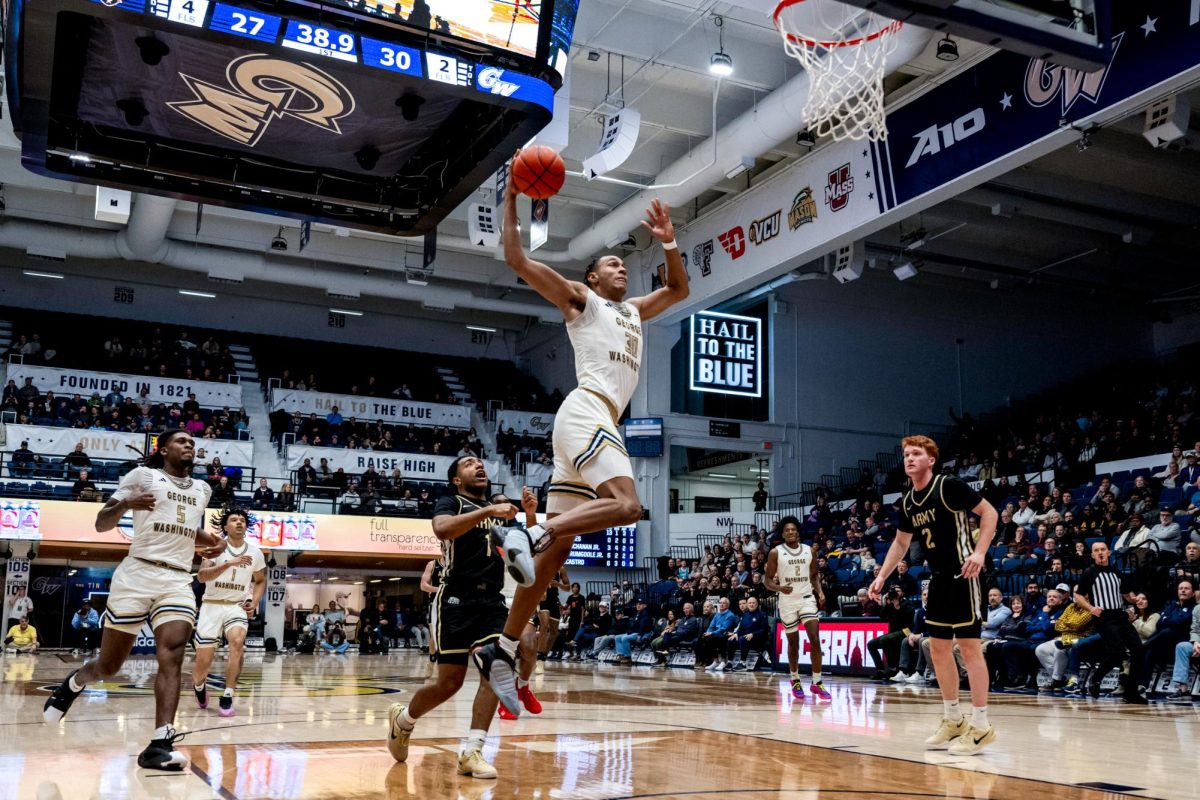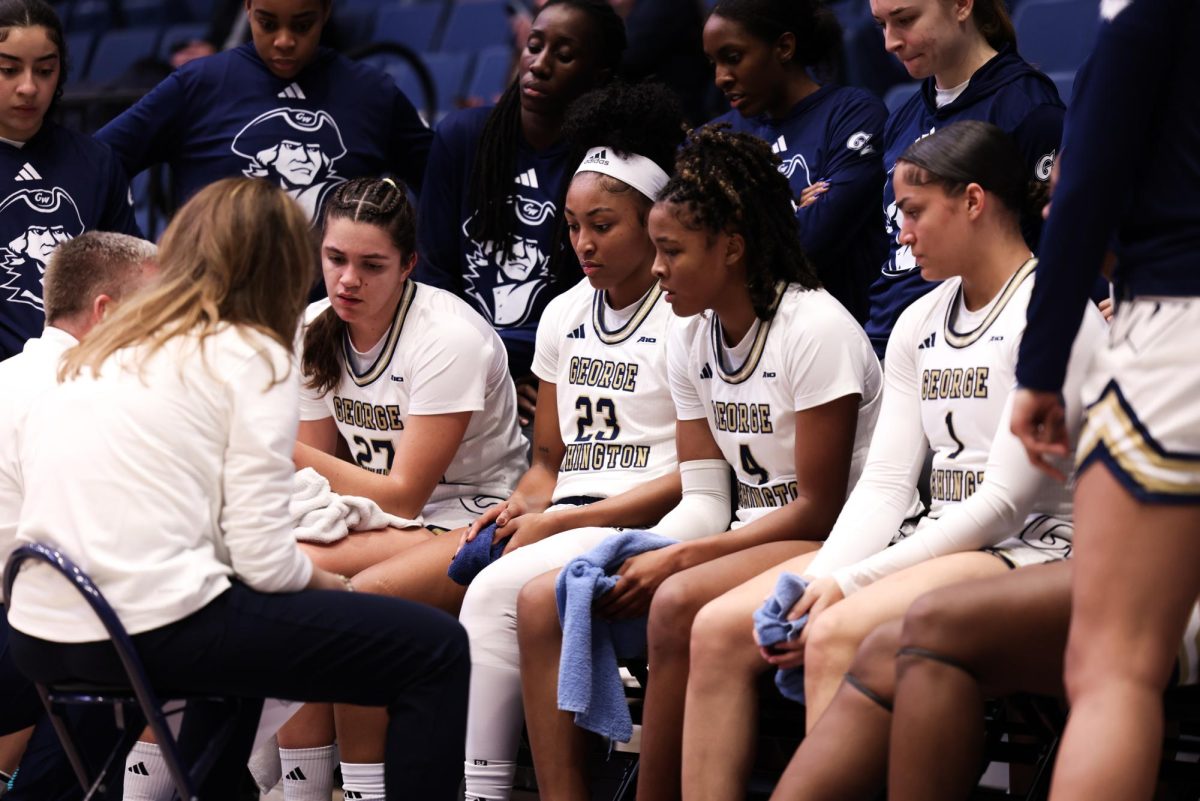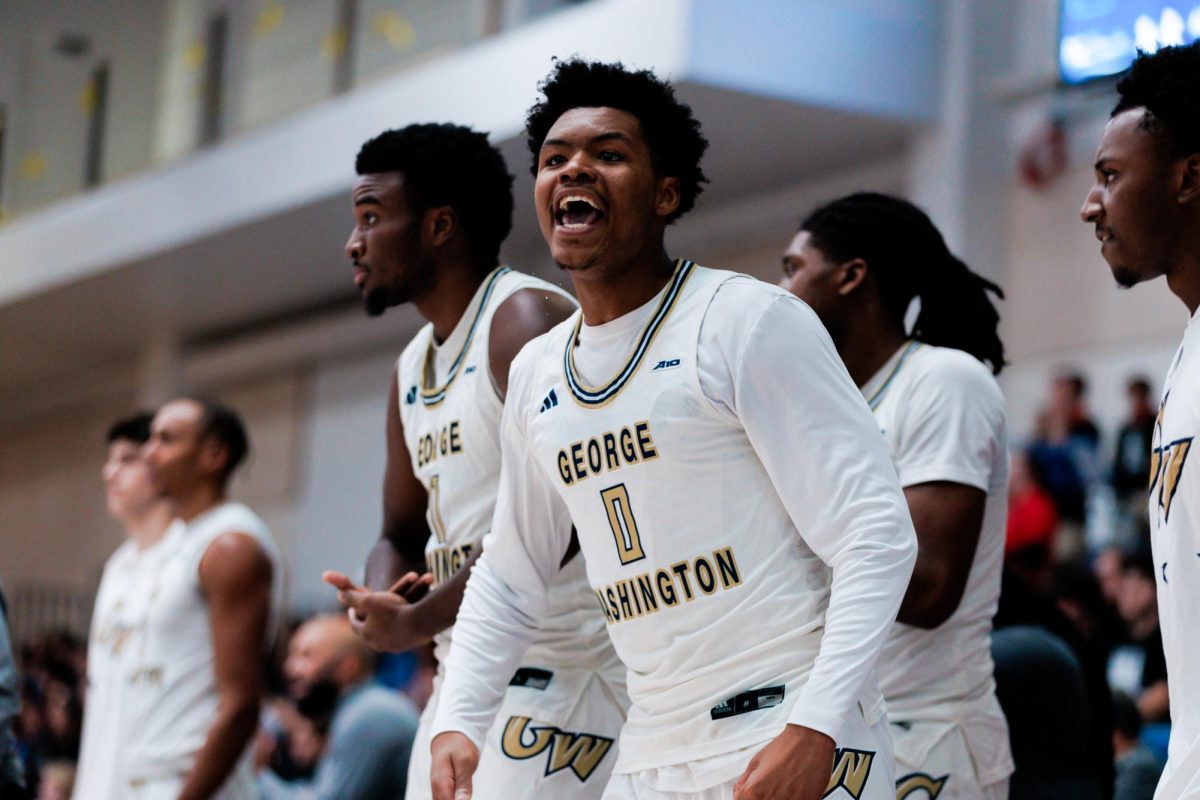If you listen closely to the 2000 hit movie Remember the Titans, you will hear new Titan head coach Herman Boone (Denzel Washington) claim to be the former head coach of the George Washington University football team. GW and football? Did the Hollywood fact-checkers get their stories mixed up?
GW did in fact have a football team back in the days when the school was known as the Columbian College (the name changed to GW in 1904), and much like the football players in the movie, the team did make a fair amount of history.
Picture headlines that read, “GW football routs Maryland 77-0” or “Colonials shutout Virginia Tech in snowstorm to win Conference Title.” While such feats today exist only in the imaginations of some football-starved GW students, those headlines represent the actual events of GW football’s 1908 season, one of its many successful seasons between 1890 and 1966.
In that time GW football produced several championship teams like the 1908 squad, including the 1890 squad that won the Southern Conference Title and the 1956 squad that beat Texas Western to win the Sun Bowl. The team compiled an all-time record of 208-241-34 before GW discontinued the football program in 1967.
In 1960, the Colonials played in the first football game held at what is now RFK Stadium and continued to play their home games there through their final season seven years later.
By that point, attendance had dwindled to about 1,000 people per game while the cost of maintaining the team had risen to about $300,000 per year. The athletic department, in agreement with the Alumni Association, cut the program.
This left players like junior guard Brad Cashman, the conference’s best blocker, and head coach Jim Camp, 1966 Southern Conference Coach of the Year, among others without a team. The decision allowed GW to finance construction of the Charles E. Smith Center, which opened in 1975.
Presently, GW boasts an athletic department that carries 18 varsity sports teams and state-of-the-art facilities such as the Mount Vernon Athletic Complex and the Health and Wellness Center. GW’s 73 percent graduation rate among athletes is also the 61st best of 303 Division I schools, according to U.S. News & World Report.
Despite the strenghths of the department, some students still long for the thrill of the gridiron. But students should not expect football to make a comeback at GW anytime soon, Athletic Director Jack Kvancz said.
“There is nothing like a Saturday afternoon college football game, but I think you also have to be realistic that there are schools in the country that just can’t do that,” he said.
Kvancz said the biggest issue keeping the University from giving football serious consideration is the availability of land to build facilities such as a stadium, practice field, locker room and weight room.
“If you’re going to get into it even in a small way, you need to have land,” he said.
While many teams, such as GW’s baseball team, which plays at Barcroft Park in Arlington, Va., and Georgetown’s men’s basketball team, which plays at the MCI Center, use off-campus facilities, Kvancz said he would be reluctant to do the same for GW football.
“I don’t need someone telling me when we can play and when we can’t play,” Kvancz said. “And that’s the problem you have when you use other people’s facilities.”
Temple Athletic Director Bill Bradshaw, whose Atlantic 10 football team plays in off-campus venues such as Philadelphia’s Veterans Stadium and the University of Pennsylvania’s Franklin Field, also noted the drawbacks of playing home games away from home.
“Anytime your building is not on campus, whether it’s basketball or football, I believe it impacts attendance from your campus community,” Bradshaw said.
The cost of a football team, which A-10 athletic directors estimated was about $7 million per year for average Division I schools and between $2-3 million for typical A-10 schools, would also be a hurdle for GW’s $4 million (not including the cost of scholarships) athletic department budget.
“Football is a financial animal in itself,” Kvancz said. “It costs money, and it costs you more money the more successful you are.”
And without a winning program, funding is hard to come by, Bradshaw explained.
“Being at the Division I level and being in a major market is the ultimate challenge,” he said. “You have people ingrained in pro football for generations, so there aren’t many Division I schools competing with professional football that draw crowds unless they win very big.”
GW’s conference foe Massachusetts has a football team that creates the kind of financial problems Kvancz spoke about. The team lost between $1 million and $2 million over the 2000-2001 season, according to the Massachusetts Daily Collegian. Last spring, when the UMass athletic department needed to cut its budget by $1.1 million, they cut seven varsity sports, including perennial national contenders men’s water polo and gymnastics, leaving the costly football team intact.
Kvancz said he would not use those tactics at GW.
“The problem in athletics is you’re dealing with real kids,” he said. “I mean they have a love for Parcheesi, they love it, and now you’re going to take it away from them?”
He added, “My own personal feeling is that you should not sacrifice other athletic endeavors for something else.”
But in UMass’ case as well as many other schools, athletic directors feel the school spirit and alumni support that a football team creates is worth the risk. And for some, it pays off. In U.S. News & World Report’s 2002 Honor Roll of top all-around athletic programs in America, which included large, state schools such as Michigan as well as small, private schools such as Lehigh, all 20 schools listed had football teams.
“Obviously Division I football is an expensive proposition,” said new UMass Athletic Director Ian McCaw. “But with the media attention and the visibility that goes along with a successful program, Saturday afternoons can be a great opportunity to showcase your university.”
Bradshaw noted similar benefits to football at Temple adding, “Going to football games can be a student activity in itself.”
GW Director of Admissions Kathryn Napper said the lack of a football team has not seemed to detract from GW’s appeal to prospective students, but that the addition of football could impact admissions indirectly.
Still, Kvancz said he could not weigh the benefits of a football team against the costs of a program unless he had the land on which to build the necessary facilities.
“You look at all the good things and all the residuals down the line, alumni giving increases, school pride, and you say ‘wow isn’t that great,'” he said. “But even if someone walked in and gave me a check for $100 million, where would we build it? It’s pretty hard here on 22nd Street.”






